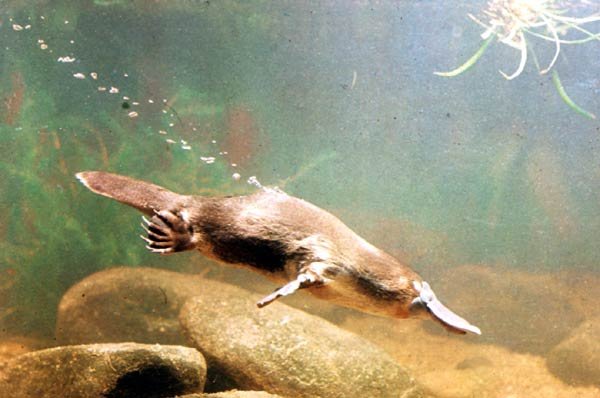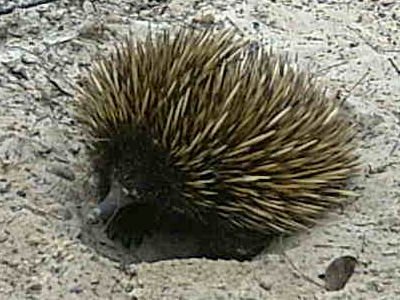The strangest animals in the world: the platypus and the echidnas, mammals that lay eggs.
Maybe many were surprised to read the title of the subject, because the truth is that it sounds strange to say that there are mammals that lay eggs, good friends, let me tell you if they exist, and today I want to talk to you about these strange animals.

Source
Today, one of the strangest mammals on Earth lives in rivers in isolated areas of Australia, has a coat as thick as the sea otter, has legs in the shape of cobwebs and a snout with a shape similar to the peak of duck. This strange animal is a platypus, that in spite of being a mammal, lays eggs!
Mammals that lay eggs are called oviparous or monotremes. Thanks to this ability to lay eggs, these mammals are sometimes considered reptilian or primitive. Besides the platypus, there is another animal with this same condition of laying eggs, it is the echidna (Tachyglossidae), these two animals are the only known monotremes until now.
The platypus ( Ornithorhynchus anatinus):

Source

Source
The platypus (Ornithorhynchus anatinus)
When a female platypus deposits its soft eggs, usually one to three eggs, it deposits them in a burrow that has been dug along the side of the cause of a stream, she keeps the eggs warm for ten days, which is the time incubation lasts When the young hatch from the eggs, they do not go out to look for their food like the reptiles, but they feed on the milk of the mammary glands of the mother. What is the characteristic of mammals?
The strange parts that the platypus has helped him get food, like his claws that serve to dig for insects, and then serve to remove them. The platypus's muzzle has another objective: when it is underwater it closes its eyes and ears, stops seeing and hearing about the river and, with its sensitive snout, looks for snails, mussels, worms and fish.
The echidnas (Tachyglossidae)
These animals also have special structures that help you find food such as ants and termites. The echidnas have a long and thin snout that to try to find food, and also has a sticky tongue in the shape of a worm with which it catches insects.
The echidnas, protect with their short but powerful legs and curved claws to dig a hole and bury themselves in it, leaving only the thorns that, by their 6 centimeters in length, scare away their enemies.
In spite of being a mammal, the reproduction of the echidnas, is through its eggs, since it is one of the two oviparous mammals, next to the platypus (Ornithorhynchus anatinus), that exist on Earth.
Posted from my blog with SteemPress : http://oscarcede.vornix.blog/?p=182